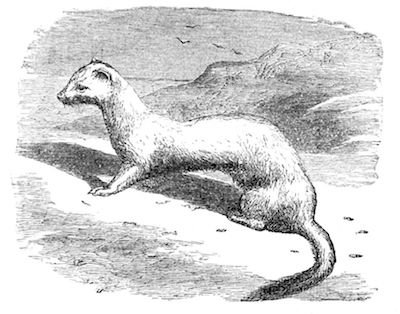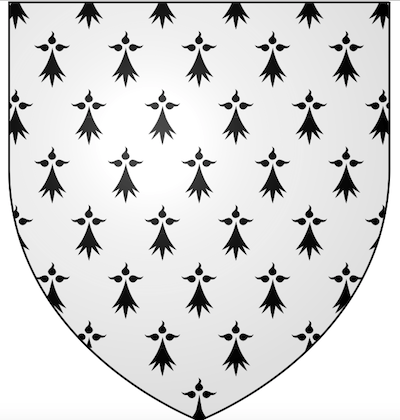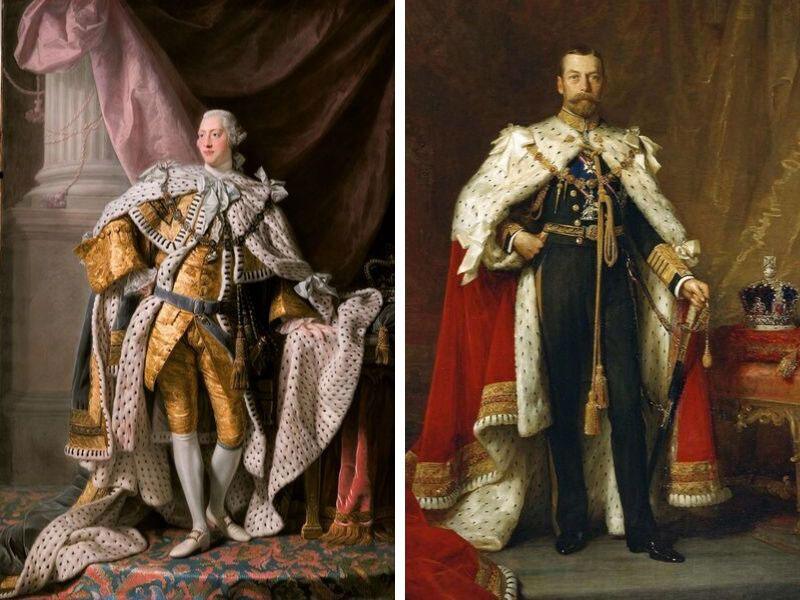I threw a picnic in our garden the other day. We were busy with all…
Why are there strawberry leaves on Dave Gahan’s crown?
I bet everybody remembers the iconic video “Enjoy The Silence” by the British band Depeche Mode in which Dave Gahan wears costume of a king and rambles across fields and mountains carrying a blue deckchair. Anton Corbijn’s video from 1990 inspired many of us and I can recall a story from my childhood. We were in 1990, right after the borders have just been opened and the socialism failed in Hungary. On the housing estate we lived, there was a guy whose nickname was “Toblerone” and he performed the video on the playground. Toblerone wore a crown from Burger King, used a huge towel as the coronation robe and carried a blue deckchair just like Dave Gahan did in the video. Although he was very creative with what he used for his costume, I believe the outfit that suits a king is a proper golden crown with 8 strawberry leaves and a coronation robe with ermine.
But why are there strawberry leaves on crowns? And why does a coronation robe contain ermine?
I was intrigued so I started to investigate.
It was not easy to find something about the strawberry leaf symbol. Although according to some theories strawberry symbolises sexuality because of its seeds (There is a huge strawberry surrounded by naked people on Hieronymus Bosch painting The garden of earthly delights), in the Middle Ages the fruit was believed to be a cure for depression. The three parted leaves symbolizes the holy trinity, the fruit itself (because of its drop shape) the blood of Jesus, and the five petal flower symbolises the five wounds of Jesus. All in all the strawberry was a symbol of perfection and righteousness, that might be the reason why crowns and churches were decorated with strawberry leaves in the Middle Ages. (The meaning of the strawberry started to decline in the Tudor period because the second wife of Henry VIII, Anne Boylen had a strawberry shaped mole on her neck which was to believed to mean witchcraft. As it happens, strawberries were indeed used by witches, therefore women refrained from eating strawberries during pregnancy.)
Hermine
According to legends, the way to hunt ermine was to lead the animal into a muddy pit. Apparently, the animal will rather surrendered than smear its fur with filth. Some legends explain the ermine dies because of sorrow if it falls into a muddy pit. Therefore, the ermine became associated with phrases like “Death before Defilement”, and “Death rather than Dishonour”. The white fur of the ermine symbolized purity, innocence and nobility – Jesus as such. If you think about it, the colour of the ermine’s fur changes: it is brown in the summer and white in the winter. Which leads you to another symbolism: Christ’s Resurrection.

That is all OK so far, but what are those black spots on the fur?
It has always interested me. Apparently, the tip of the ermine’s tail (winter fur) is black. This is reflected on coronation robes and coat of arms in different shapes. The oldest and most common pattern consist of 3 spots and a comet shape which in fact is the ermine’s tail itself. This pattern was used from the 12th century onwards in heraldry and the most famous example is the coat of arms of Brittany. The same or similar patterns are used in Western France, in the Benelux countries and in England.

So this is the outfit that a king deserves as shown in below two pictures, however, later on the ermine was popular in fashion as well.


The Crown
Having mentioned the crown, it is worth knowing that there are two main crowns of the British sovereign. One of them is the St Edward’s Crown made in 1662. There are no strawberry leaves on this one, but four crosses pattée, and four fleur-de-lis. This crown is only used at coronation. The other one is the Imperial State Crown, worn on celebrations.






Crowns (at least British ones) do not, since things were standardized by Charles II, have strawberry-leaves. Strawberry-leaves are on the coronets of various types of nobles (Dukes, Marquesses, Earls, in a different configuration for each rank) but I think NOT on the coronets of Viscounts and Barons and you should always check this rather than try to remember it.)
Also, the coronets of the Monarch’s children and grandchildren, and some but not all great-grandchildren have different ornaments, depending on the descent. The ornaments are various configurations of crosses, fleur-de-lis, and strawberry-leaves, depending on the descent. Descent from the Monarch in an all-male line is different than descending from the Monarch’s daughters. It is possible that the only GREAT-grandchild of a Monarch who gets a special coronet is the oldest son of the oldest son of the Prince of Wales. The use of the special coronet (or not) is, I believe, hand-in-hand with the use (or non-use) of the title “Prince/Princess” and the use (or non-use) of the Style of Address “your Royal Highness”, but, again, always look that up. It’ll change every decade or so.
The crown of the Dauphin or heir apparent is red velvet and all fleur de lis, all other princes have crowns of blue velvet and fleur de lis alternating with strawberry leaves. This was the case in France and England. Perhaps all strawberry leaves didn’t step on any toes.
It might be not the royal crown, but a duke’s one. The “Coronet” article on the Wiki (https://en.wikipedia.org/wiki/Coronet) features a very similar design (8 strawberry leaves) for a ducal coronet.